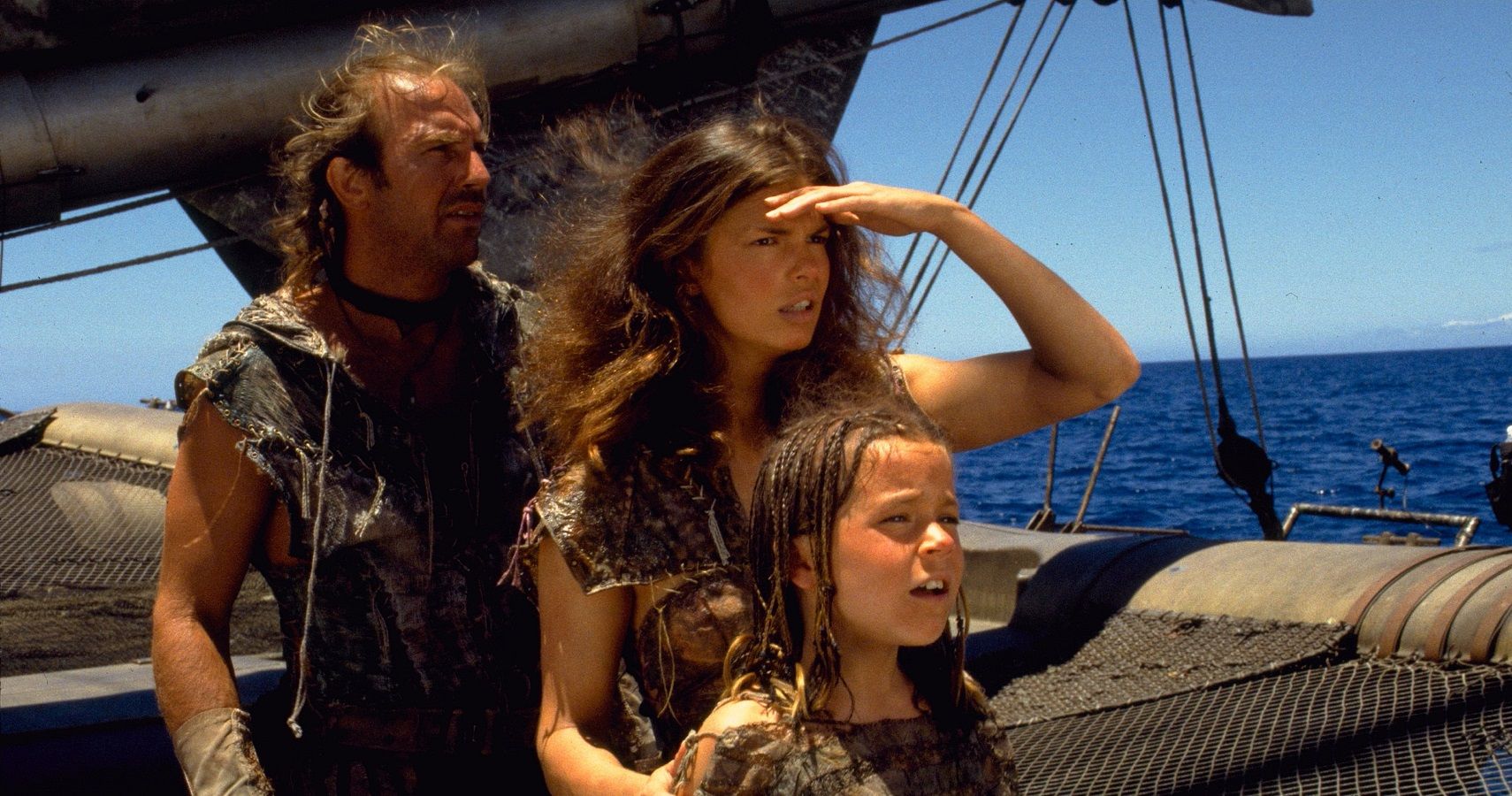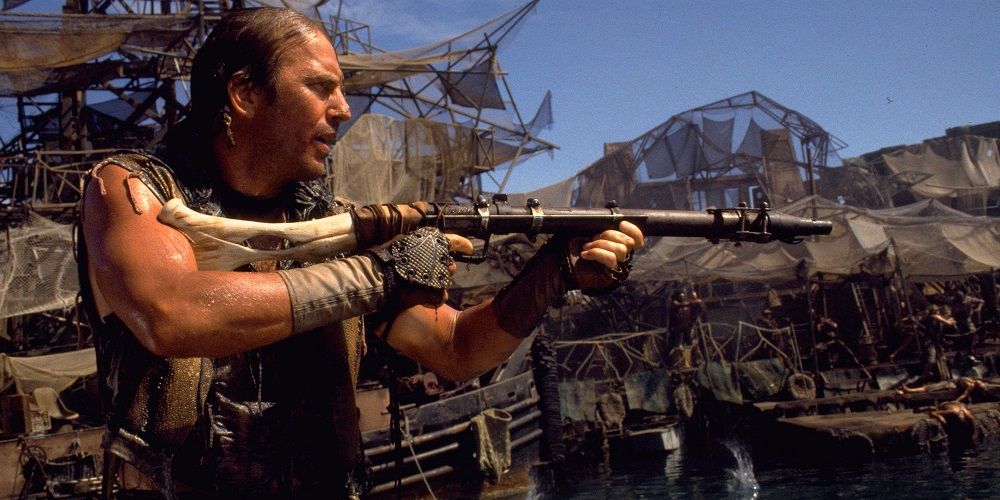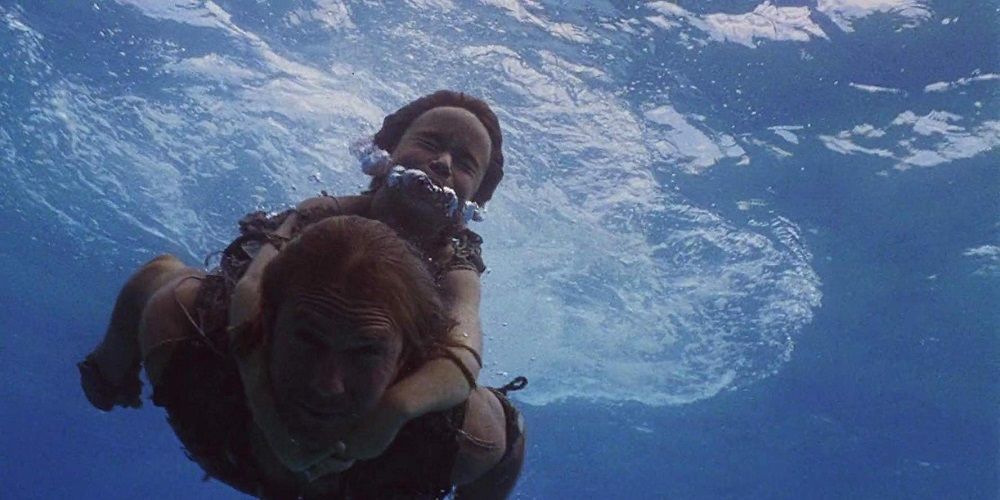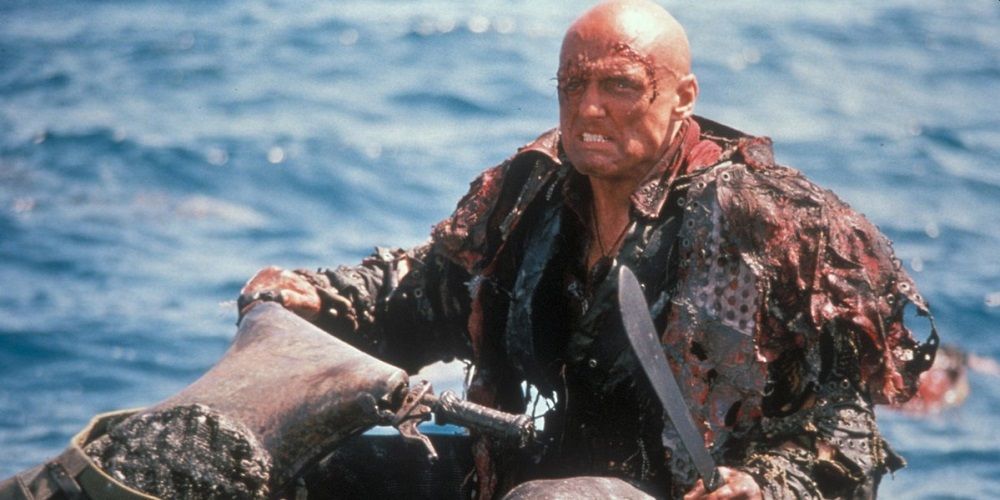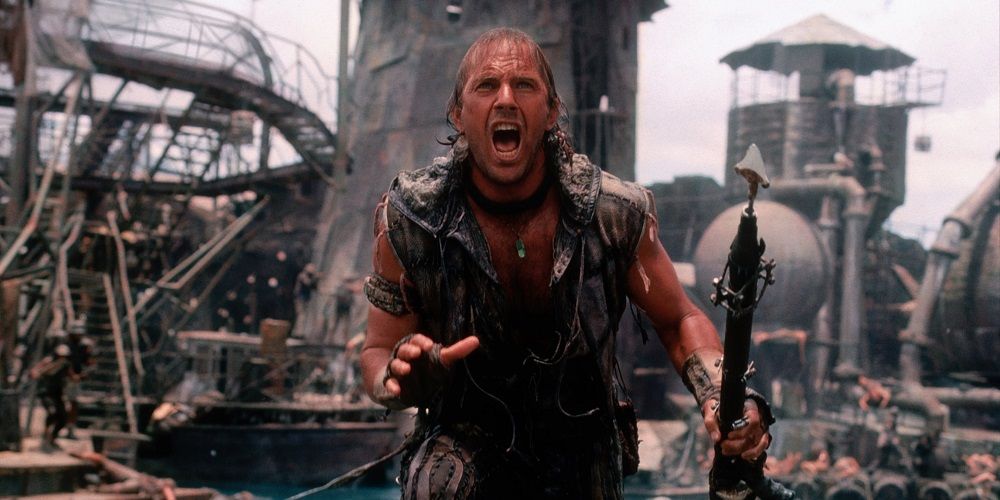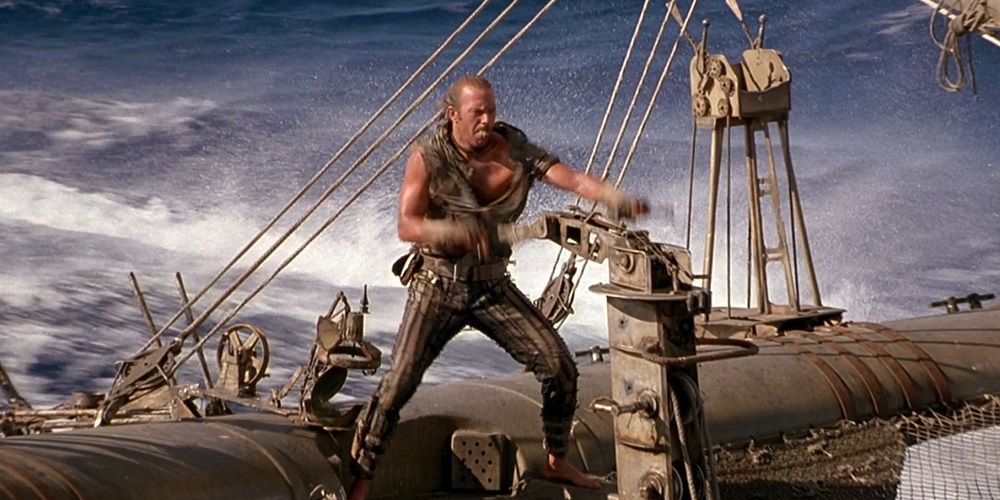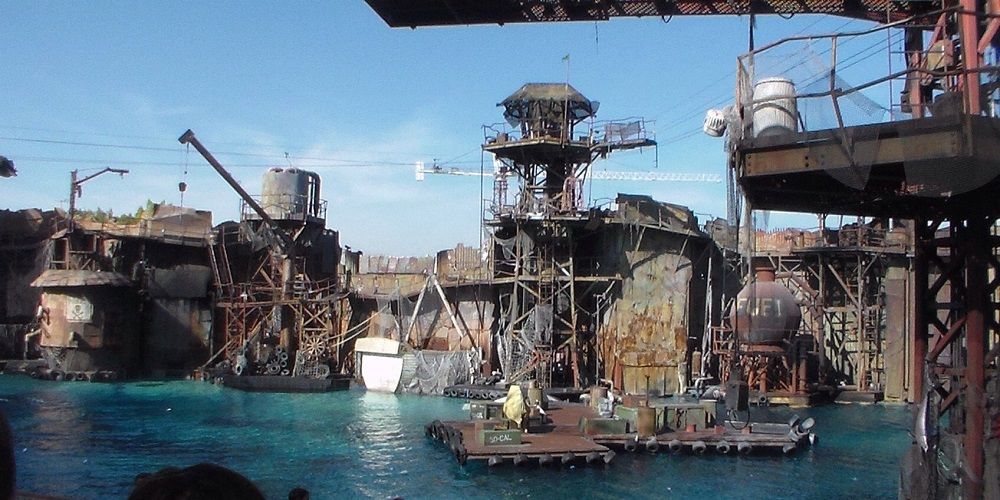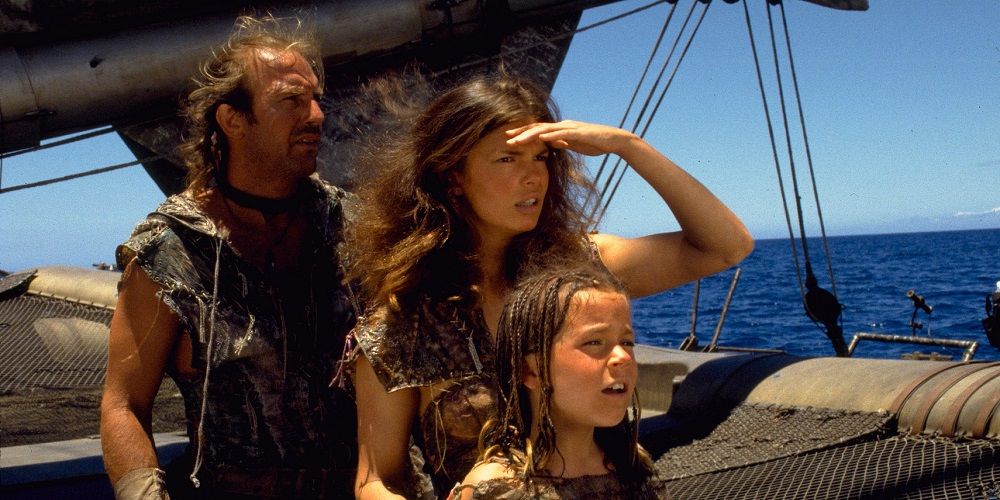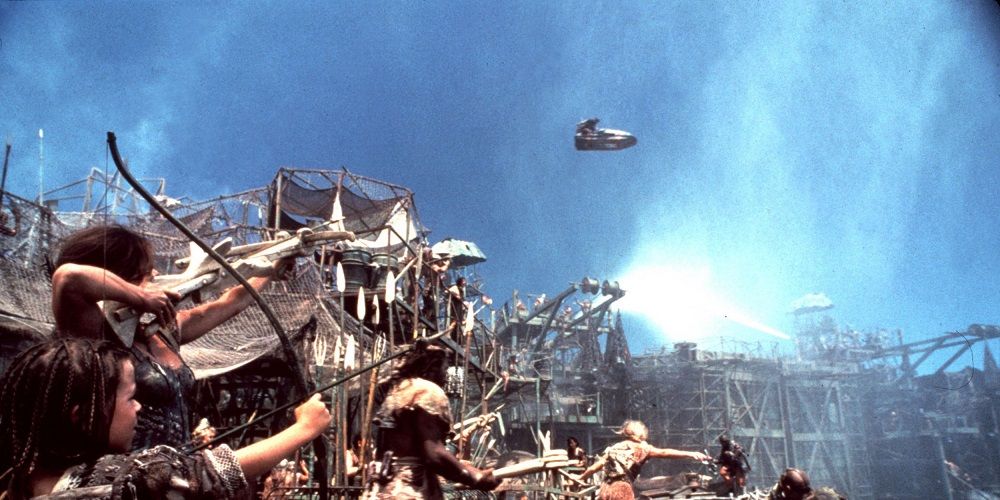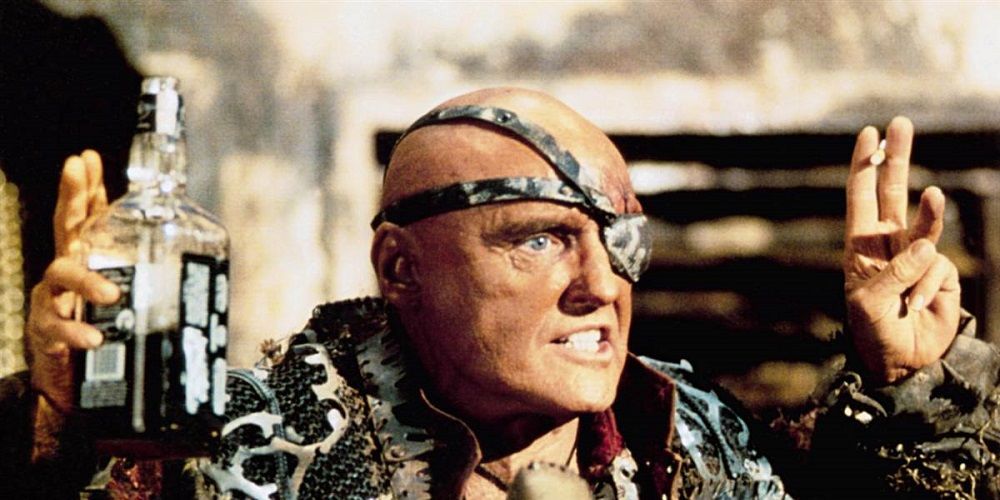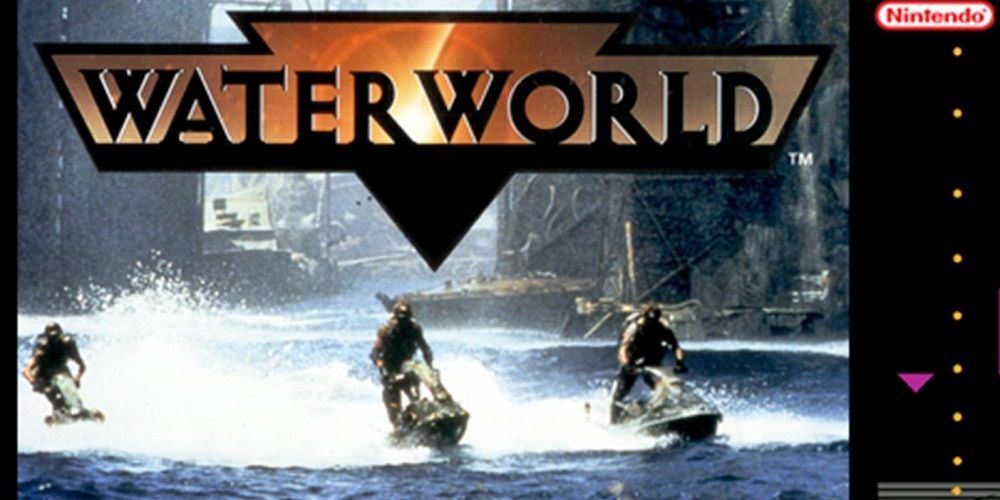Waterworld is among the most notoriously doomed Hollywood productions ever attempted. The post-apocalyptic adventure film stars Kevin Costner as a crusading mutated Mariner who leads humanity towards salvation after the polar ice caps melt and turn the globe into an aquatic wasteland.
Not only was Waterworld panned by critics as a bloated incoherent mess, but the extremely expensive movie also bombed at the domestic box-office. The arduous production was plagued by escalating budgets, destroyed sets, on-set infighting, injuries and illness, and other unforeseen mishaps. As the film celebrates its 25th anniversary, here are 10 behind the scenes tidbits about the making of Waterworld.
Original Conception
Prior to Kevin Costner boarding the project, Waterworld was originally conceived as a children's adventure film. Screenwriter Peter Rader was told by a producer that he could secure funding for a Mad Max knockoff, so he began penning a post-apocalyptic story set on the high seas.
The original tone of the movie was much campier. The Mariner was a human being defending the Atoll and had a penchant for secretly painting seahorses. The villain Deacon (Dennis Hopper) was far sillier as well, dressing like King Trident and slapping his underlings in the face with fish. Once writers Joss Whedon and David Twohy were brought in for rewrites, the film became much more serious.
Dueling Kevins
Although Kevin Costner urged Universal to hire director Kevin Reynolds (who wanted Robert Zemeckis or Lawrence Kasdan to helm), the two men constantly fought on the set of Waterworld. Things got so bad between the two that Reynolds reportedly left the film during postproduction, prompting Costner to finish the editing duties himself.
The two Kevins also quibbled on the set of Robin Hood: Prince of Thieves, which made Reynolds reluctant to take on Waterworld in the first place. The rift prompted Reynolds to say Costner should only star in movies he directs.
Most Expensive Production At The Time
Prior to James Cameron's Titanic breaking the record two years later, Waterworld was the most expensive movie ever made at the time it was produced. The movie cost an unprecedented $175 million to make, shooting in a large water enclosure off the coast of Hawaii on elaborate floating sets.
Universal initially greenlighted the film with a $100 million budget, but the cost escalated as a result of several production delays resulting from inclement weather, rewrites, destroyed sets, and the like.
Kevin Costner's Investment
Kevin Costner reportedly invested $22 million of his own money into the Waterworld production, which is the same amount it cost to create the massive atoll in the film. Despite his commitment to the film, Costner's actions led to additional on-set friction.
Costner reportedly stayed in a private waterfront Hawaiian villa that cost $4,500 per night, while the crew members stayed in sweltering condos devoid of air conditioning. Costner even implored the VFX team to digitally erase his receding hairline in the film, a feat the proved quite costly in 1995. All told, Costner spent 157 days on the set while working six days a week.
Injuries & Mishaps
While filming the scene in which the Mariner is strapped to the mast of his trimaran, a violent squall nearly took Costner's life. Costner's stunt double was also carried out to sea and a slew of extras nearly drowned during production.
Famed big-wave surfer Laird Hamilton also served as Costner's stunt double for several of the scenes taking place in the water. While he avoided injury while filming, stunt coordinator Norman Howell suffered compression sickness while shooting underwater and was helicoptered to a Honolulu hospital before recovering and returning to work a few days later.
Floating Atoll Set
The massive floating Atoll set that much of the movie takes place on cost roughly $22 million to create. The structure was one-quarter of a mile in circumference and weighed over 1,000 tons (2 million pounds). Yet, neither the massive atoll nor the 30 or so boats featured in the film came equipped with bathrooms. Filming had to be stopped for people to be transported to a nearby ship to use the lavatory.
The gigantic Atoll set required every piece of steel in Hawaii and more to be flown in from California. While this cost a fortune, Waterworld injected roughly $35 million to the local Hawaiian economy.
Destroyed Sets
Another contributing factor to the increased budget and production delays on Waterworld was the destroyed sets. Production had to shut down at least three times due to hurricane warnings, and a multi-million dollar set was completely razed by a hurricane. As a result, the whole slaver faction subplot was excised from the script.
Rebuilding the sets prolonged the shoot and substantially increased the budget. Additional filming was done in Los Angeles, Santa Catalina Island, Huntington Beach, and the Channel Islands.
Mysterious Landmarks Identified
The Atlantis-like sunken city the Mariner frequents in the film is actually a digitally altered version of Denver, Colorado. The mile-high city landmark "The Northwest Building" can be spotted in one shot, which somewhat resembles a cash register.
Similarly, the much sought-after "Dryland" in the film is none other than Mount Everest. This is not made clear in the theatrical cut of the film but is confirmed in the extended "Ulysses Cut," in which Helen and Enola find a plaque honoring Edmund Hillary and Tenzing Norgay, Everest's first successful climbers.
Extended Cut
Speaking of the extended cut, Kevin Reynolds reportedly turned in a three-hour version of the film. As a way to increase daily screenings and recoup its inflated budget, Universal cut the film down to 135 minutes for the theatrical release.
ABC restored roughly 40 minutes of footage for an extended TV airing of the film, which resolved several loose storylines. Later, a fan edit of the film dubbed "The Ulysses Cut" restored the TV footage as well as the uncensored material ABC left out to craft the most complete version of the film. It was deemed so good that Universal sanctioned the version to be remastered and included in the box-set release along with the other versions.
Videogame Adaptations
Despite the dismal box-office performance, Waterworld inspired at least two videogame adaptations. Nintendo developed a game version of the movie for its Super NES, Gameboy, and Virtual Boy consoles. The game marked the only game based on a feature for Virtual Boy, but did not do well commercially.
Sega also attempted to develop videogame for its Genesis and Saturn consoles, but decided to nix the release once development was completed. A PC game called Waterworld: The Quest for Dry Land was also released in 1997.

